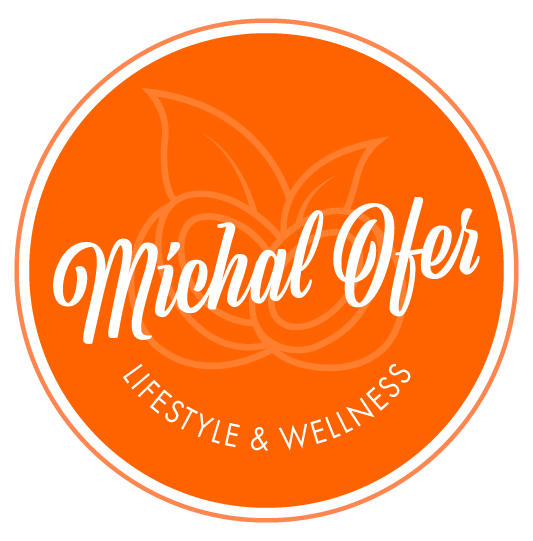Food Freedom Friday Edition 17
Hidden Sugar
Sugar is a sneaky thing and likes to hide in the least obvious of places. Here are my top 10 foods that make a great hiding place for that crafty ingredient.
1. Wheat bread.
Long positioned as a healthier alternative, most commercial wheat breads are stripped of fiber and loaded with the same added sugar, preservatives, and other hidden non-nutritious ingredients as white bread. Two slices of whole wheat bread raise your blood sugar more than two tablespoons of table sugar. There is no difference between whole wheat and white flour here. One of the biggest marketing lies perpetrated on an unsuspecting public is the inclusion of 'whole grains' in many processed foods full of sugar and wheat, giving the food a virtuous glow. Instead of wheat bread and wraps, opt for coconut wraps, lettuce wraps, nori or any other whole-foods based, gluten-free alternative.
2. Smoothies.
Craftily positioned as a fast, healthy breakfast alternative, most commercial smoothies are nothing more than adult fruity milkshakes. A 16-ounce (their smallest size) Jamba Juice Banana Berry Smoothie carries a whopping 12 teaspoons of sugar. While it packs an impressive 16 grams of protein, a 16-ounce Starbucks Orange Mango Smoothie isn't much better with 37 grams of sugar.
3. Protein bars.
If "Caramel Nut Blast" sounds like a candy bar, it probably comes pretty close. Adding a little fiber and some nutrients does not suddenly make a protein bar healthy; it simply transforms a candy bar into an overpriced nutrient-enriched candy bar. If you read the ingredients you may notice 4, 5, 6 or more different types of sugar as ingredients.
4. Almond butter.
Nut butters seem to be preferred sweeter, which explains why most peanut butters come loaded with sugar. Almond butters can also contain a large amount added sugar, and become a great example of how a perfectly healthy food can become botched when you are not reading your labels. MaraNatha no-stir almond butter contains organic evaporated cane sugar as its second ingredient, whereas their organic raw almond butter contains 100 percent raw organic almonds and nothing else.
5. Yogurt.
The yogurt array at your grocery dairy aisle is vast and the choices can become overwhelming. Some of them, especially fruit-on-the-bottom yogurts, could have as much sugar as a candy bar. One small container of Liberty 0 percent Honey packs 29 grams of sugar. Even though it may seem like honey is a healthy alternative to sugar, your body breaks it down just like table sugar. If you are able to tolerate dairy, stick with full-fat unsweetened Greek yogurt and read those labels: it should contain no added sugar.
6. Green juices.
Think about eating four pieces of fruit, in one go – probably not like to happen, but a juice can easily pack that much sugar without the fiber to buffer it out. Vegetable juices at least sound better because they are lower in sugar, yet bottled juices sometimes become misleading. Naked Green Machine, which sounds like a vegetable juice, promises ‘no sugar added.’ Despite its name, this drink is mostly fruit, and an entire 15.2 oz. bottle contains almost 12 teaspoons of sugar. Again, the emphasis falls on reading labels carefully.
7. Bottled teas.
Green tea deservedly earns a health halo, but loading it down with sugar like many manufacturers do quickly demotes that aura and reduces the drink to nothing better than an uncarbonated soda. A bottle of Honey Green Tea contains organic cane sugar as its second ingredient. Switch instead to unsweetened green-tea varieties and add your own healthy sweetener. Better yet, brew your own.
8. Dried fruit.
No one would add M&M's or Skittles onto your salad, but you may as well if you are adding raisins, dates, dried cranberries, and other ‘candied’ fruit. According to the largest dried cranberry manufacturer, a quarter-cup of these little berries contains 29 grams, or nearly six teaspoons, of sugar. Why would you do that to a perfectly innocent salad or think they are a healthy alternative to other more obvious sugar-laden snacks?
9. Meat sauces.
Restaurants love to drown perfectly healthy fish, chicken, and beef in thickened, syrupy sauces. This is often done to disguise inferior meats. Any dish described as glazed most likely contains sugar. Even if do not taste overtly sweet, those mysterious brown sauces in Chinese and Thai dishes pack cornstarch (which converts to sugar) and other dubious ingredients. Be very specific that you want meat grilled, baked, or broiled. This way you will avoid eating your dinner with dessert when your entrée arrives.
10. Balsamic vinegar.
Authentic, traditional balsamic vinegar comes from Italy, requires 12 years or longer to age, and undergoes rigorous testing before it goes to market. Commercial balsamic vinegar does not come close to undergoing this painstaking process. Manufacturers usually make mass-produced balsamic vinegar from white wine vinegar by adding caramel coloring (for color and added sweetness) as well as thickeners like cornstarch and gum, which increase the sugar content. Next time you order a salad, skip the balsamic and drizzle with extra virgin olive oil and plain white or red wine vinegar or fresh lemon juice.
